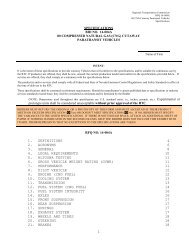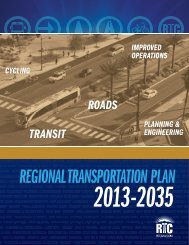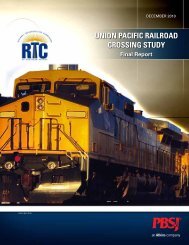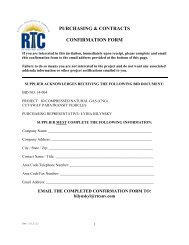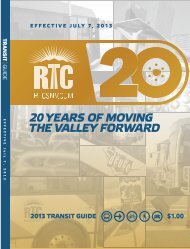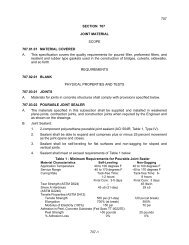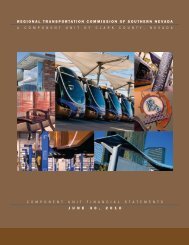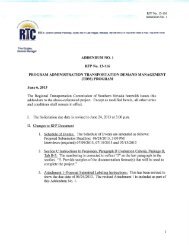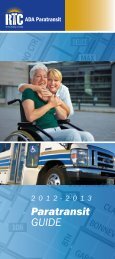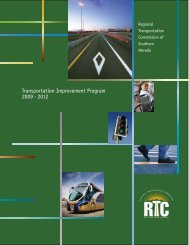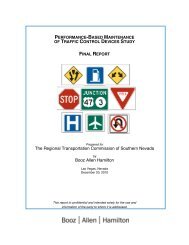(Blue Diamond Road) Corridor Study - Regional Transportation ...
(Blue Diamond Road) Corridor Study - Regional Transportation ...
(Blue Diamond Road) Corridor Study - Regional Transportation ...
Create successful ePaper yourself
Turn your PDF publications into a flip-book with our unique Google optimized e-Paper software.
3. Overview of Transit Modes RTC SR-160 <strong>Corridor</strong> <strong>Study</strong><br />
<br />
Hybrid-electric – Like dual-mode propulsion systems, hybrid-electric propulsion<br />
systems combine internal combustion engines with electric drive systems. Hybridelectric<br />
propulsion systems incorporate an on-board energy storage device (e.g.,<br />
batteries or ultra capacitors), allowing the power to shift from one propulsion system<br />
to another, contributing to improved performance and fuel economy with reduced<br />
emissions. Hybrid buses operate in a limited number of places, most notably New<br />
York and Seattle.<br />
Other technologies such as fuel cell and electric batteries are still not developed enough to<br />
be commercially viable.<br />
3.1.3 Infrastructure Elements<br />
Running Ways<br />
Conventional bus transit is versatile. Since rubber-tired buses allow them to travel along<br />
any road, including local streets, major arterials, and highways and freeways, conventional<br />
bus transit has no special running way requirements. Conventional transit typically has no<br />
provision for dedication of lanes and most often travels in mixed flow lanes.<br />
Stations / Stops<br />
A minimum requirement for stations or stops for conventional bus transit is a sign indicating<br />
the location of the bus stop. The sign often conveys information about the route and<br />
direction of the route serving that location. Typically, stops served by conventional bus<br />
transit lines with significant ridership are also provided with a protective shelter with seating<br />
and more transit information.<br />
Fare Collection<br />
Fare collection for conventional bus transit is typically a farebox at the entrance to the<br />
vehicle. Electronic fareboxes with smart card readers are slowly being integrated into urban<br />
transit systems to speed up the process of fare collection.<br />
Intelligent <strong>Transportation</strong> Systems (ITS)<br />
Conventional bus transit systems are also integrating intelligent transportation systems.<br />
Most prominently, transit systems are integrating automated vehicle location (AVL)<br />
systems. AVL systems can either use transponders with detectors placed along the route or<br />
can be based on Global-Positioning System (GPS) technology. These systems enable<br />
managers to monitor and dispatch vehicles and respond to passenger demand more<br />
interactively.<br />
3-4



